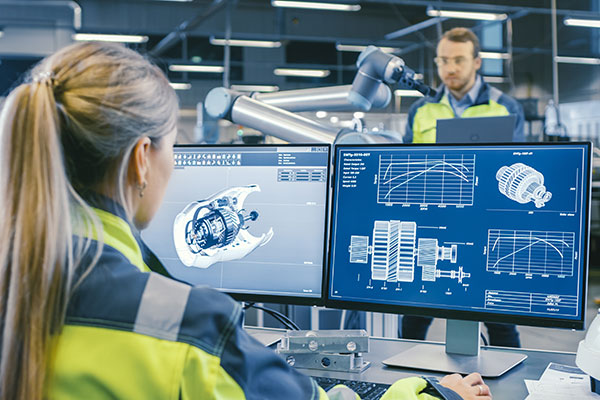Hitting at the Hidden (and Not So Hidden) Costs of CAE
Today’s engineers use Computer Aided Engineering (CAE) software to solve a range of engineering problems associated with the mass production of products.

Latest News
June 3, 2019
Many know first-hand that single licenses of advanced CAE multi-physics solvers can easily run in the tens of thousands or even up to a hundred thousand dollars per license, per year. On top of licenses is the cost of HPC systems used to run sophisticated CAE software.
On-demand, scalable, cloud and SaaS-based CAE business models have been recently introduced to allow engineers to use advanced CAE software without having to juggle licenses, share tools or wait for access to typically limited on-premises HPC.
These new models will usher in a new wave of innovation, similar to what the engineering world experienced with the transition from the draftsman’s table to CAD, or from 2D to 3D CAE. Allowing engineers to utilize nearly limitless HPC resources in the cloud will forever change CAE workflows.
Engineers evaluating their current legacy CAE systems against the newer cloud CAE models should examine all the costs, including hidden costs, associated with legacy CAE.
R&D Costs
The role of engineering within an organization is to turn innovations into profitable products while minimizing R&D costs. One way to think of those costs is as the sum of engineer-hours committed to a project or product, plus the costs of prototypes, plus the cost of engineering tools, including CAE software, HPC hardware, bench equipment, etc.
Of these costs, engineer-hours committed to a project and physical prototyping typically outweigh engineering tools; however, selection of the latter drives the costs of the former, either up or down.
For example, if an engineering firm uses a CAE package unable to effectively analyze and optimize engineering designs in a timely manner, engineers wait for CAE results and data that are ultimately invalid. Engineers are often the highest paid staff, so when they spend more time waiting for CAE results, instead of actually making informed, data-driven design decisions, the firm suffers financially.
The problem is compounded when engineers are forced to “learn-by-prototyping,” the discovery of design issues by physical – rather than by less expensive, simulated – prototyping. Consider the MEMS sensors industry. When design issues aren’t detected during initial phases, but only after the sensor die is assembled and packaged, this adds another round of testing that can cost millions of dollars and months of time.
Product Risk
Product risk is the summation of risks associated with the release of a new product and its product/market fit. Will the new product perform as expected? Will it beat competitive products on critical specs, such as cost, power, performance, etc.? Many of these risks only become evident after a product is launched into the marketplace.
If CAE tools don’t deliver the wealth of design insights needed to optimize a product’s design, the risk of market failure is heightened. When engineers are constrained by their tools, such as using 2D instead of 3D models due to computational constraints, it’s like looking at the universe through a straw. An inordinate amount of time can be spent waiting on design optimization study results from outdated CAE tools.
This is especially applicable to the $20 billion wireless component market that is looking to make the transition from 4G to much more stringent 5G specifications. Engineers are scrambling to miniaturize the dozens or hundreds of tiny RF components that make an RF front-end work so it can deliver streaming 4K video to future 5G smartphones.
In the past, RF engineers have relied on empirical methods, rudimentary 2D CAE methods and expensive physical prototyping to optimize things like SAW and FBAR filters for RF front-ends. In our 3D CAE world, design decisions based on 2D data simply won’t yield optimal designs. Legacy 2D CAE practices are unsustainable, and many wireless firms will lose market share to smaller firms that adopt better CAE, explore larger 3D designs, and find optimal designs to meet customer demand.
Time-to-Market
Business history is replete with examples of products that arrived too late and led to the collapse of massive publicly traded companies.
Codified engineering product design processes leveraging CAE have perfected the innovation engine at many companies, and new technology emerges at a dizzying pace. As a result, further optimization is not only possible, but required to stay competitive. Never has this been truer than in industries like the driverless car market.
Technological advancement in the driverless car space requires massive amounts of CAE simulation and HPC core-hours. Engineers designing the thousands of electronics that comprise next-generation driverless cars simply don’t have the luxury of learning from prototyping. Moreover, the sensors, systems and algorithms to power driverless cars will be tested with millions of virtual passenger miles, so that they will work flawlessly the first time a completely driverless car drives a real human.
Conclusion
To meet the demand for world-changing technologies, engineers need access to as much computing horsepower as they can get. When engineers are constrained by their CAE tools, innovation suffers, and when innovation suffers, the world suffers. When evaluating their current CAE tools, engineers should assess all the costs and not just those directly associated with the tools themselves.
More OnScale Coverage

Subscribe to our FREE magazine, FREE email newsletters or both!
Latest News







